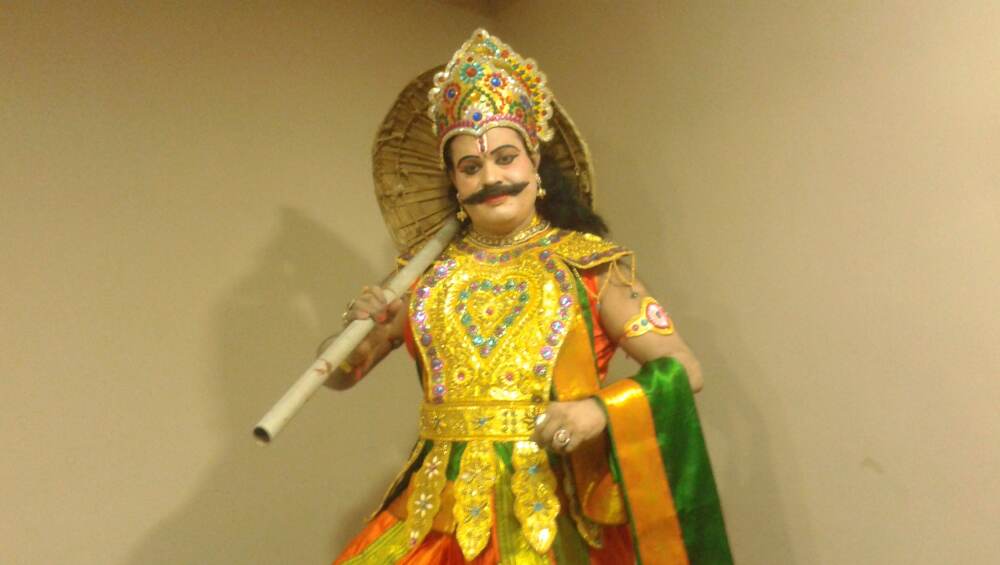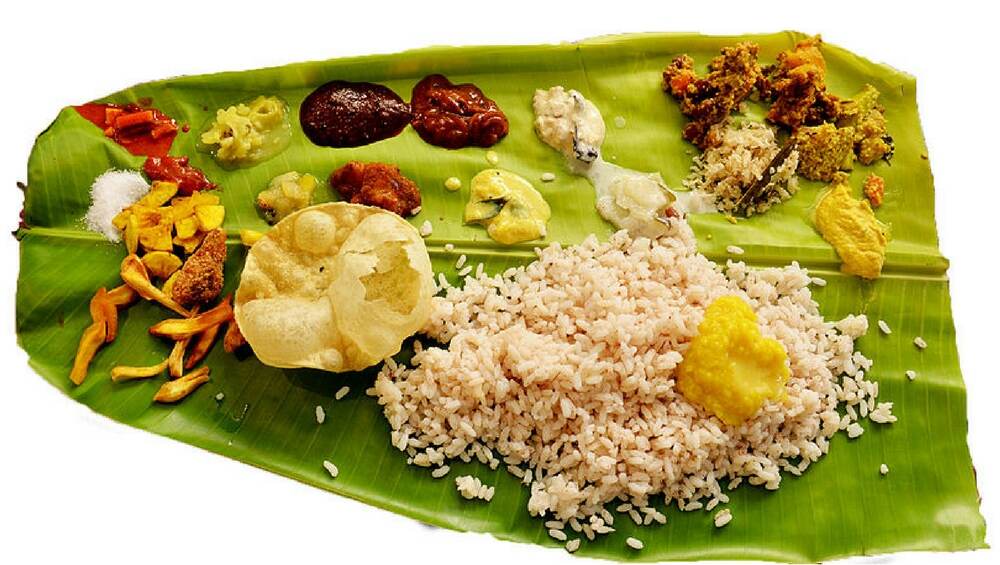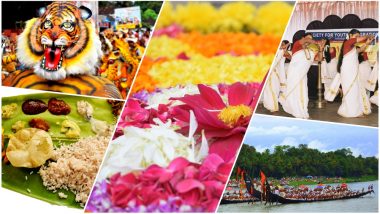Onam, the harvest festival of the Keralites, has officially commenced. According to the Malayalam calendar, Onam is celebrated in the month of Chingam, which coincides with the zodiac Leo and the Gregorian months of August-September. The most prominent legend associated with the festival is the story the benevolent Emperor Mahabali of Kerala, who was banished to the underworld by Lord Vishnu’s Vamana Avatar. It is believed that every year during Onam, Mahabali’s visits his erstwhile kingdom to check upon his subjects, much like Santa Claus. Men dress up as Mahabali or Maveli and go door-to-door blessing people. The festival is marked by a medley of other celebrations, including Puli Kali or Tiger Dance, Thiruvathira Kali and boat races. Many people outside Kerala think that Onam is a single-day festival. But in fact, it is a ten-day long celebration, with each day dedicated to a special event.
Onam officially starts on the nakshatra Atham and is celebrated for the next ten days until Thiruvonam. Here’s the low down on the ten days of Onam.
Day 1 Atham
The first day of Onam comes under the Nakshatra of Atham in the Chingam month. This day marks the ten-day long festivities that unfold in Kerala. People start the day with temple visits and a breakfast of boiled plantains and pappadams. Highlights of this day include swinging on a flower-decked swing or an oonjal, arranging the flowers into pookalams and watching athachamayam or a magnificent procession of elephants, floats and folk art.

Day 2 Chithira
After a day of festivities, the second day of Onam Chithira is spent in offering prayers and adding more blooms to the flower arrangement. Decorating the pookalam sees equal participation from girls and boys of the house. After all, the best pookalam is believed to win the attention of Mahabali. On this day, families chalk out their shopping list for the festival. Watch video tutorials for easy pookalams or flower rangolis
Day 3 Chodhi
The third day of Onam falls under the Chodhi or Swathi Nakshatra. More flowers are added to the pookalam, and the size of the flower arrangement keep growing. Families go shopping for new clothes on this day, where new fineries are bought for everyone in the house, including the help.

Day 4 Vishakam
Day four of Onam under the Nakshatra Vishakam is considered to be one of the most important days of the festival. Excitement builds up as people start preparing for the grand onasadhya by making pickles, chutneys and chips meant to be served for the feast. New flowers are added to the pookalam as it keeps growing in diameter.
Day 5 Anizham
On the fifth day of Onam under the Anizham star, the much-awaited snake boat racing event called vallamkali is organised. The event is one of the most iconic ones associated with Onam. Vallamkali is a highly-competitive event where even the ones who don’t participate in the rowing cheer the oarsmen in a spirited fashion.
Day 6 Thriketa
On the sixth day of Thriketa, the pookalam gets its customary additions with more flowers. The events start building up to a crescendo with many cultural events taking place all over the state.
Day 7 Moolam
The seventh day of Onam sees more addition to the festivities on Moolam nakshatra. Many households start serving the much-anticipated onasadhya or onam buffet. Cultural programmes like Puli Kali (or Tiger Dance) and Kai Kotti Kali are performed. The atmosphere gets more and more mirthful as the festivities increase. Thrissur's Swaraj Round Gears Up for Pulikali or Tiger Dance, Kerala’s Famous Folk Art Form
Day 8 Pooradam
Eight day of Onam comes under the star Pooradam. Clay pyramids called to represent the deity Thrikkakara Appan is used to decorate the pookalams on the eighth day. Each pyramid is decorated with more flowers. Households start scrubbing and cleaning their houses anticipating a visit from the Mahabali.
Day 9 Utradam
The eve of Onam is called Utradam and is the penultimate day of Onam. Festivities start in full swing in anticipation of the festival. Malayali households go into a frenzy, making all the last-minute preparations for the feast next day. In traditional Nair households, the eldest member of the family presides over festivities and rewards the artisans and farmers who come bearing produce for the family.
Day 10 Thiruvonam
The culmination of the ten-day festivities happens on Thiruvonam, the main day of Onam. People start the day by wearing the best fineries and wishing one another. The grand feast or Onasadhya is arranged on the day. The vegetarian sadhya comprises as many as 20 items made from fresh produce such as gourds, lentils and other vegetables. It is rounded off with two types of payasam or kheer – paladapayasam and pradhaman. Cultural programmes like song and dance routines, especially Kai Kotti Kali or Thiruvathira Kali, are organised. Although sometimes the rituals and celebrations spill over to the eleventh and twelfth day of Avittom and Chathayam, day ten or Thiruvonam marks the end of Onam festivities.
Onam is the possibly the biggest and the most well-known festival of Kerala. The harvest festival has traditionally been associated with happiness and prosperity where the agrarian community revels in its bountiful produce. The ten-day long celebrations are best experienced in Kerala. If you want to witness the festival in all its glory, be sure to visit the state around the time of Onam.
(The above story first appeared on LatestLY on Aug 15, 2018 04:30 PM IST. For more news and updates on politics, world, sports, entertainment and lifestyle, log on to our website latestly.com).













 Quickly
Quickly


